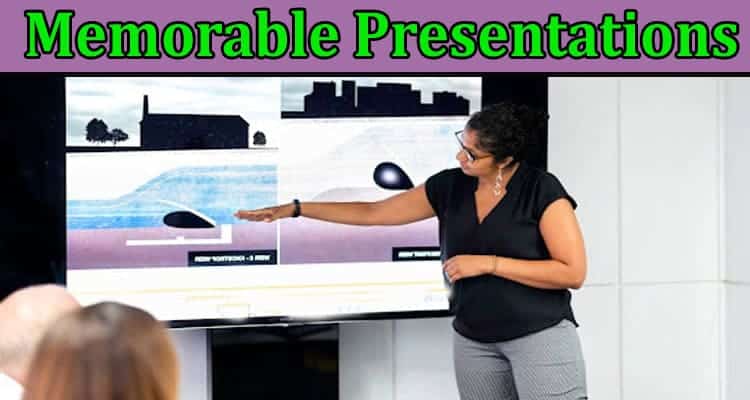Delivering a presentation that captivates an audience requires more than a topic and a slideshow. It’s a performance art where every slide, story, and gesture plays a crucial role. Crafting such an engaging presentation involves understanding your audience, developing a compelling narrative, using impactful visuals, weaving storytelling into your delivery, and mastering the nuances of presentation performance. This article will delve into key components that can transform a mundane monologue into a riveting show. Keep reading to discover how to make your next presentation unforgettable.
Incorporating Visual Aids and Multimedia Elements
Visual aids are an integral component of an impactful presentation. When used correctly, they reinforce your message, aid comprehension, and make your points more memorable. Select images, charts, and graphs directly relevant to your content and contribute meaningfully to your narrative.
Videos and animations can be particularly effective in breaking up the monotony of a presentation. However, they should be used judiciously, ensuring they support and don’t overshadow your message. A short clip illustrating a complex point can be worth a thousand words.
Considering design principles when creating visual aids is vital. This is where a presentation design agency can make a world of difference. They specialize in visually crafting aesthetically pleasing and aligning with your message and brand identity.
Moreover, simplicity is key. A cluttered slide can distract or confuse your audience. Opt for clean, professional designs with ample white space and readable fonts. Visual elements should make your presentation more accessible, not create a barrier to understanding.
Crafting a Powerful Presentation Narrative
Every memorable presentation tells a story. It guides the audience through a structured journey, with a clear beginning, middle, and end. Start with a strong opening that establishes context and grabs attention – perhaps a surprising statistic or an anecdote that resonates emotionally.
As your narrative unfolds, make sure each point flows logically into the next. Clear transitions are vital to maintaining audience engagement and ensuring your message is digestible. Avoid cluttering the narrative with unnecessary details; stay focused on the overarching storyline.
The core of any narrative lies in its ability to evoke a response. Your presentation should aim to stir something within the audience: inspiration, motivation, or urgent action. Balance facts with narrative elements that appeal to the head and the heart.

Remember, a powerful conclusion is just as crucial as a compelling opening. Reinforce your key message, recap the journey, and leave your audience a lasting impression – a call to action, a thought-provoking question, or a motivational quote.
The Art of Storytelling in Presentations
Storytelling is a potent tool. It can turn abstract concepts into tangible experiences, making your presentation infinitely more relatable and memorable. Identify stories from real-life experiences, case studies, or historical events that complement your message.
A narrative arc in storytelling influences how the story is received. A challenge, the journey towards overcoming it, and the eventual resolution provide listeners with a familiar and satisfying framework. Each element of the story should be chosen to amplify the takeaway you want your audience to have.
Crafting emotional connections through storytelling is crucial. People may forget the specifics of what you said, but they’ll remember how you made them feel. Balance the emotional with the informational to create a holistic experience that resonates deeper.
Remember, the best stories feature clear characters, a central conflict, and vivid details – these elements help your audience imagine themselves within the story, enhancing their connection to your message. Embrace the power of pauses and variable pacing to build suspense and emphasize key points.
Altogether, a compelling presentation is based on understanding your audience, engaging visuals, a well-crafted narrative, and timeless storytelling techniques. When combined with practice and feedback, these components pave the way for informative and inspiring presentations. Embrace these principles, and your next presentation will surely be a success.

